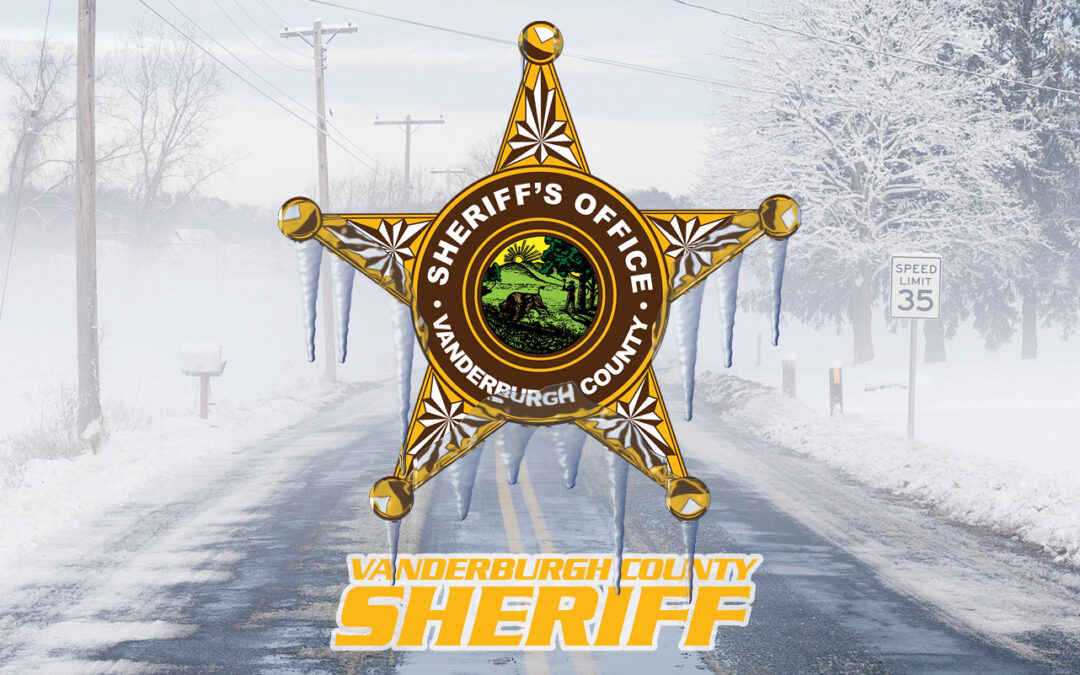Before a Winter Storm
Assemble an emergency supply kit with:
- Non-perishable food and water for three days, including a gallon of water per person per day.
- Battery-operated all-hazards radio
- Flashlight
- Extra batteries for radio and flashlight
- First aid kit
- Extra clothing, sturdy shoes, blankets, and personal hygiene items
- List of emergency phone numbers
- Important documents (copies of photo ID, social security card, insurance, and banking information)
- Cash, especially small bills. Power outages can limit use of ATMs and credit cards.
- Special items (baby formula, insulin, life-sustaining medication)
- Create a family emergency plan that includes how to contact one another if you are not together when disaster strikes and how and where to reassemble.
Prepare your home by:
- Insulating with weather stripping around doors and windowsills.
- Insulating pipes with plastic or newspapers and allow water from faucets to drip a little to avoid freezing.
- Learning how to shut off water valves if a pipe bursts.
- Removing dead tree branches from around your home. Ice and snow can cause limbs to snap and could do damage to your property.
During a Winter Storm
- Don’t attempt to go out and get something.
- Make sure the heat source is safe. Many fires start via unsafe heating.
- Keep items three feet away from heaters.
- Use floor mats for extra insulation.
- Move around to keep your blood circulating.
- If you are with someone, share body heat.
- If you are stranded in your car, do NOT attempt to get out and go find help unless it’s within 100 yards.
- Run the car 10 minutes each hour to keep warm, but make sure the tailpipe is not blocked or you may suffer from carbon monoxide poisoning.
Winter Storm Terms
- Winter Storm Advisory: Cold, ice, and heavy snow are expected.
- Winter Storm Watch: Heavy snow and ice are very possible over the next couple of days, so finalize preparations and listen to a weather radio or forecasts.
- Winter Storm Warning: Severe winter weather is in the area. Heavy snow and/or ice will begin soon.
- Blizzard: Strong winds over 35 mph along with snow that reduces visibility.
- Sleet: Rain that falls and turns into ice before it hits the ground.
- Freezing Rain: Rain that falls and turns to ice once it hits a surface.
Extreme Cold
Cold weather puts extra strain on the heart as the body tries to keep warm. Anyone performing hard work in the cold should take breaks regularly. Because the body is already working hard just to stay warm, it is possible to be overheated as well. Try to stay indoors when weather is extremely cold, especially if winds are high.
- If you must go outdoors, make trips outside as brief as possible.
- When going outside during very cold weather, adults and children should wear:
- a hat
- a scarf or knit mask to cover face and mouth
- sleeves that are snug at the wrist
- insulated and waterproof mittens or gloves
- several layers of loose-fitting, thermal wear or material that “wicks” moisture off the skin
- a water-resistant or tightly woven coat
- two layers of socks with boots or shoes that are waterproof and have a flexible sole
Frostbite
Frostbite freezes the skin and can result in loss of feeling and even amputation. The risk of frostbite increases for those with poor blood circulation and people who are not dressed properly for the extremely cold temperatures.
To treat frostbite:
- Get the person indoors or to a warm place and remove any wet clothing
- Do not re-warm the skin unless it can be kept warm; warming then re-exposing the area can worsen the damage
- Do not use direct heat from heating pads, radiators or fires.
- Do not rub or massage the skin
- Bandage the area with a loose sterile dressing, using gauze or cotton balls to separate fingers and toes
- Call 9-1-1
Hypothermia
Colder temperatures can cause hypothermia, a condition where the human body is at an abnormally low temperature. The condition affects the brain and someone suffering from hypothermia may not realize what is happening nor do anything about it.
To treat hypothermia:
- Get the person indoors and remove wet clothing
- Warm their trunk slowly first, not hands and feet; warming the extremities may cause shock
- If using hot water bottles or hot packs, wrap them in cloth; do not apply directly to the skin
- Give the person a warm drink avoiding caffeine or alcohol
Driving
Take the following measures to help ensure safety on the road this winter:
- Check tire pressure and tread depth. Use a pressure gauge to determine if tire tread is deep enough to ensure good traction. Consult your owner’s manual for advice.
- Look for uneven wearing which can also be dangerous.
- Check battery, exhaust system, heater and defroster. Make sure the battery is not past its lifespan, and that the terminals are tight and free of corrosion. Hoses and belts should be inspected for cracks. Now is the time to discover if your heater is broken – not when the temperature drops.
- Check antifreeze. Make sure that a 50 percent antifreeze, 50 percent water mixture is at the proper radiator level. If the coolant is two years old, get it flushed and refilled.
- Change oil every 3,000-5,000 miles. Consider using a lighter, “winter weight” oil. Refer to your owner’s manual for guidance.
- Check windshield wipers and blades: Replace the blades twice a year and make sure extra wiper fluid is on hand.
- Ensure the four-wheel drive system and brakes are functioning properly.
- It is a good idea to keep at least a half tank of gas in your car at all times during the winter months, to keep the fuel lines from freezing.
Items to include in your vehicle emergency kit:
- Even with the best maintenance and cautious driving, snow, ice and freezing temperatures can sometimes still get the best of your vehicle. Hazardous winter driving conditions induce many accidents, which is the leading cause of death during winter storms. Being prepared to handle potential slide-offs, accidents, and car trouble in winter is a simple but crucial step to take in preparing for the next few months. Supplies to keep in your vehicle should include:
- At least two blankets or a sleeping bag
- Flashlight or battery-powered lantern and extra batteries
- Booster (jumper) cables
- Emergency flares
- Extra clothing, particularly boots, hats and mittens
- A steel shovel and rope to use as a lifeline
- Bottled water or juice and nonperishable high-energy foods (granola bars, raisins, nuts, peanut butter or cheese crackers)
- Thermos or container that won’t allow liquids to freeze
- First-aid kit and necessary medications
- Sand or non-clumping cat litter for tire traction if your vehicle gets stuck in snow or ice
- A cell phone and charger which can be adapted to vehicle use
- Ice scraper and snow brush
- Tire repair kit and pump
- Candle, matches, heat sticks/packs, lighters, hand-warmers, etc. (Be sure to crack the window if you’re using a heat source inside the vehicle)
- Lock your vehicle, even in bad weather. If locks freeze, heat the key. Do not pour hot water on the locks – they will refreeze.
Safe winter driving techniques
- Find out about the driving conditions and pay attention to weather reports on the radio.
- Remove any snow on your vehicle’s windows, lights, brake lights and signals.
- Check your vehicle’s tires, wiper blades, fluids, lights, belts and hoses.
- Let someone know your destination, route and expected time of arrival.
- Become familiar with your vehicle’s winter weather operating characteristics. Front-wheel-drive vehicles generally handle better than rear-wheel vehicles on slippery roads because the weight of the engine is on the drive wheels, improving traction.
On the road:
- Keep your gas tank at least half full. Fill the tank before you park for lengthy periods. This will help prevent fuel line freeze-up.
- If you need to turn on your wipers, you need to turn on your lights.
- Remember to drive well below the posted speed limit and leave plenty of room between cars.
- Be cautious of black ice. Roads that seem dry may actually be slippery and dangerous. Take it slow when approaching intersections, off-ramps, bridges or shady areas.
- Stay attentive and reduce speeds during times of limited visibility.
- Give snowplows room to work. The plows are wide and can cross the centerline or shoulder. Do not tailgate and try not to pass.
- Give yourself space, remember it takes your car extra time to stop on slick and snowy roads
- Understand your vehicles brakes and how they work. Brake early, brake slowly, brake correctly, and never “slam on the breaks.”
- When driving on ice and snow, do not use cruise control and avoid abrupt steering maneuvers.
- Take it slow when merging into traffic.
- Be aware of what is going on ahead of you because actions by other vehicles will alert you to problems more quickly giving you that split-second of extra time to react safely.
What to do if you become stranded
- If you are involved in an accident or slide-off, encounter vehicle trouble or become stuck in the snow it’s important to stay calm and take a few precautions to help you stay safe and help rescuers find you.
- Remain calm. Chances for rescue are better if you remain calm and in your vehicle.
- Do not leave your car, it is the best protection you have.
- Run the engine for 10 minutes every hour to stay warm. An idling car only uses about one gallon of gas per hour.
- If you don’t have a cell phone to call for help, tie a brightly colored cloth to the antenna for rescuers to see.
- Light a flare or turn on a flashlight to let others know you’re stranded in the vehicle snowbank.
- Keep the overhead light on when the engine is running so you can be seen (remember to keep the windows cracked).
- Keep the exhaust pipe free of blockage to prevent carbon monoxide poisoning.
- Use floor mats, seat covers and blankets for added warmth. If you must leave your vehicle during a severe snow storm or blizzard, secure a line of rope or cord to yourself and the vehicle to avoid becoming lost or disoriented.
- Keep bottled water in your vehicle emergency kit. Never eat snow. It will chill you and lower your body temperature.
*Source: Indiana Department of Homeland Security


